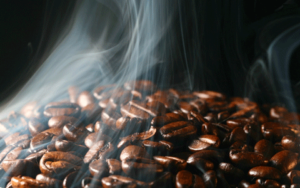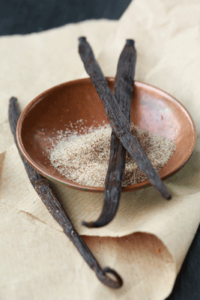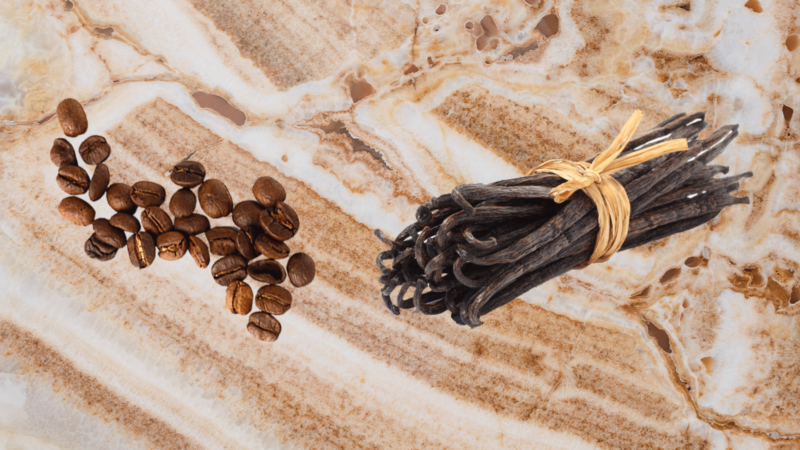Cooling It
Sweet Vanilla Cooled
For centuries people first had to roast their morning drink – in a pan over open flame – before grinding and brewing. It’s easy to understand the bean preparation process, harder to get it just right:
- Heat, constantly stirring
- First crack: very light roast
- Second crack: medium roast
- Continue roasting and agitating to get darker roast levels
- Quickly cool
- De-chaff
Post-Roast Chemistry
The method used to cool coffee beans after raising them to the proper temperature during roasting – typically between 400° and 500°F – directly affects the degree to which the roasted beans develop their unique flavor and aroma characteristics. A cluster of chemical processes that has been named the Maillard Reaction takes place both in heat-treated foods and in those stored at room temperature for long periods of time. Products expected to be brown and to exhibit certain special aromas, such as coffee, bread, and meat, benefit from the Maillard Reaction. Dairy and juice products suffer: who wants brownish orange juice?
“Coffee undergoes a dramatic chemical change during the roasting process, giving rise to over 800 compounds with almost one-third representing important aromatic compounds.”
(“Chemical Changes During Roasting,” Coffeechemistry.com, April 27, 2015)
During the roast, the proportion of water to solids drops by about a third; bean color changes, in stages, from green to yellow to brown; and the outer shell becomes oily. Bean volume increases, sometimes doubling. Twice each roast the coffee beans “crack” as internal pressure builds until cells explode. Roasters listen for two audible cracking stages: the first is primarily caused by internal water boiling, which releases steam, and the second crack as other gases are created and suddenly discharged.
Each variety of green coffee bean and, in fact, each bag of each variety behaves a little differently during roasting. The rule of thumb for a coffee roaster is: watch, listen, smell, and monitor readings. Call Nicole Sauce during certain stages of a roast and you risk being put off.
Make It Quick
So what can help the beans’ temperature drop more quickly? Many roasting operations spread newly-roasted coffee on a grid and direct air through it, agitating the beans to expose each to cool air. Never add water! But for a quick-cooled coffee with a subtle extra something, you should try a coffee batch that has been cooled with some (edible) form of alcohol. Welcome to the February Coffee of the Month: Sweet Vanilla Cooled.
 The vanilla with which the February coffee is quick-cooled is as special as the varieties and roast levels. You’ll get a whiff of an old-time baking day because your roaster Nicole makes her own vanilla extract. She buys vanilla beans with the same care with which she selects coffee beans. She robs her own bar for a good bourbon. Finally, she waits and waits. Some vanilla dedicated to cooling coffee is five years old.
The vanilla with which the February coffee is quick-cooled is as special as the varieties and roast levels. You’ll get a whiff of an old-time baking day because your roaster Nicole makes her own vanilla extract. She buys vanilla beans with the same care with which she selects coffee beans. She robs her own bar for a good bourbon. Finally, she waits and waits. Some vanilla dedicated to cooling coffee is five years old.
We’ve never shipped a more colorful coffee than Sweet Vanilla Cooled. Enjoy the several shades of brown. Take a quick sniff before grinding. And notice that extra frisson of quality vanilla, whether you add milk or drink it black.
Not a member of the Holler Roast Coffee of the Month Club? You can still join.
Want to improve your coffee-tasting ability? Get a copy of the short book Colors of Coffee: Coffee Tasting Guide from Holler Roast Coffee, at the Spring Workshop, or through Amazon.






